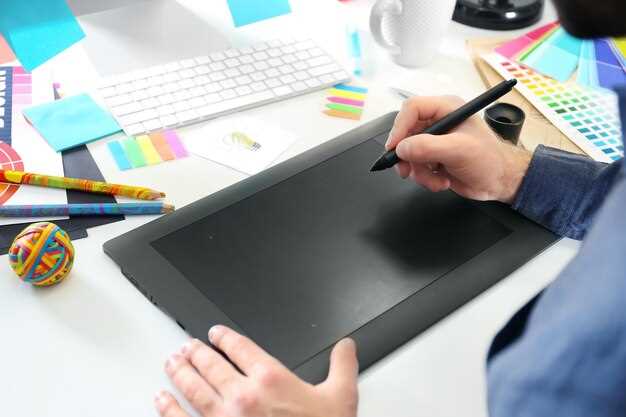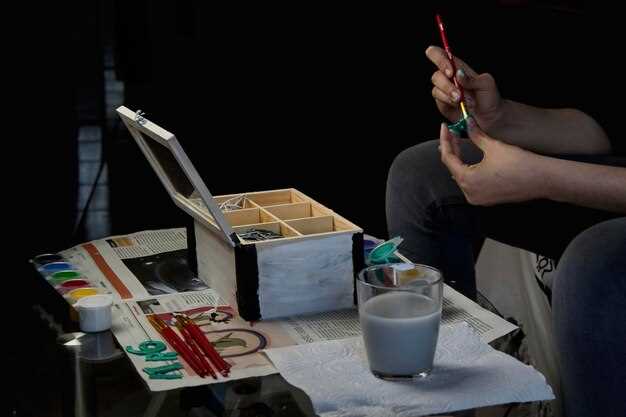Krita shines as a premier choice for artists seeking free software equipped with advanced features. Designed by artists for artists, Krita offers an intuitive interface and powerful brush engines suitable for both beginners and professionals. With regular updates and a supportive community, it’s a reliable companion for your digital art journey. Notably, Krita supports various file formats and provides robust features such as vector tools and a customizable user interface, ensuring a seamless creative experience.
For those dedicated to animation and working primarily on macOS, Clip Studio Paint is a top contender. Renowned for its comprehensive animation tools and lie-up of specific brushes, Clip Studio Paint allows unparalleled precision and control, especially for comic and manga artists. With features like 3D models, perspective rulers, and a sophisticated layer system, artists can bring complex scenes to life effortlessly. Additionally, its frequent updates ensure compatibility with diverse hardware, making it indispensable for a dynamic workflow.
Another remarkable option is Corel Painter, known for its extensive range of natural-media brushes. Ideal for professionals who value realism in their digital art, Corel Painter mimics the finest details of traditional art techniques. The software stands out with its expansive library of textures and tools, allowing artists to experiment and refine their styles. Whether you’re rendering a fine oil painting or experimenting with watercolor, Corel Painter offers immense versatility, tailored to elevate your creative processes.
Embrace the power of Adobe Illustrator for vector-based artwork. Recognized industry-wide for its precision and scalability, Illustrator is a crucial tool for anyone interested in graphic design and schematic definitive structures. Its pathfinder and pen tools allow for the remarkable creation of sharp edges and smooth curves, making it perfect for logos, typography, and complex illustrations. Its integration with other Adobe Creative Cloud applications ensures a fluid transition between various stages of the creative workflow.
Choosing the Right Software for Your Drawing Tablet

Start with Adobe Photoshop if your projects include complex image editing or painting. Its precise professional-grade tools and extensive brush palette make it a favorite for many artists. Optimize your workflow with its customizable interfaces and workflow automation features.
If illustration or comics are your focus, Clip Studio Paint offers an outstanding selection of illustration tools, comic-specific features, and a substantial asset library. Leverage its advanced pen pressure detection, which aligns perfectly with numerous tablet specifications for a natural drawing experience.
For vector graphic enthusiasts, Adobe Illustrator provides unmatched capabilities for creating scalable artwork. Its compatibility with drawing tablets allows for detailed precision and control, ideal for logo design and typography projects.
- Krita delivers a robust, open-source option, perfect for digital painting. It includes a large variety of brushes and texture packs and supports a range of tablet brands.
- Corel Painter caters to traditional art styles brought to the digital space. Benefit from its vast brush options that mimic real-world painting tools, tailored for use with pressure-sensitive tablets.
- MediBang Paint is perfect for those who want a free, lightweight option focused on manga and comic art, offering cloud storage and multi-platform support.
Explore tablet manufacturer recommendations for optimized software compatibility. Many brands offer proprietary software that enhances functionality, offering a seamless integration with device features.
Prioritize trial versions to ensure software meets your specific artistic needs and hardware compatibility. This approach minimizes investment risk and customizes your toolkit to enhance your creative process efficiently.
Compatibility: Does Your Tablet Match the Software Requirements?
Ensure that your drawing tablet meets the software’s system requirements by checking the operating system compatibility. Software like Adobe Photoshop, CorelDRAW, and Clip Studio Paint often require the latest versions of Windows or macOS. Verify that your tablet drivers are updated to support desired software features smoothly.
Inspect the processor and RAM specifications, as intensive programs demand higher computing power for optimal performance. A tablet with at least 8GB of RAM and a modern multi-core processor should suffice for most creative software. For applications like Blender or ZBrush, consider more robust hardware.
Screen resolution plays a pivotal role too. Applications supporting high DPI displays can significantly enhance your workflow, especially if your tablet features a high-resolution screen. Confirm that the aspect ratio of the tablet complements the software to prevent distortion.
Investigating pen pressure levels and tilt functionality is beneficial. Software often utilizes these capabilities for advanced drawing techniques, and ensuring these align with your tablet’s specs can maximize your creative output.
For seamless integration, explore compatibility forums and user communities. Helpful insights abound regarding specific software and tablet combinations, ensuring you make informed decisions based on shared experiences. These evaluations can prevent unexpected issues and facilitate a smooth creative process.
Pricing and Subscriptions: What to Consider in Terms of Cost?
Begin by evaluating your budget to determine which software falls within your financial capabilities. Consider these options:
- Purchase vs. Subscription: Decide if a one-time purchase or a subscription model suits your workflow better. Software like Corel Painter often offers a one-time purchase, whereas Adobe Creative Cloud requires a subscription.
- Free Alternatives: Explore free software like Krita or GIMP if budget constraints are tight but ensure they meet your artistic needs.
- Student Discounts: If you’re a student, leverage discounts provided by companies such as Autodesk, offering significant savings on essential tools.
- Trial Versions: Utilize trial versions before committing. Programs like Clip Studio Paint offer trials to test out features thoroughly.
- Long-Term Savings: Some subscriptions offer annual plans at a reduced rate compared to monthly fees, providing overall savings if you’re committed for the long haul.
- Feature Sets: Avoid paying for advanced features you might not use. Assess whether the basic version satisfies your requirements before opting for premium editions.
Assess your needs and use the flexibility in pricing and subscription models to your advantage, ensuring your choices align with both your creative ambitions and financial planning.
User Interface and Learning Curve: How User-Friendly is the Software?
For new and seasoned digital artists alike, Krita offers a straightforward interface that minimizes distractions and maximizes accessibility. With customizable tool panels and a layout that encourages exploration, users can quickly acclimate to its environment.
Procreate, particularly favored on the iPad, champions simplicity without sacrificing functionality. Its gesture-based controls are intuitive, enabling users to perform complex tasks with minimal clicks.
Adobe Illustrator maintains a consistent design across its suite, providing familiarity for users transitioning between Adobe products. However, its depth can pose a steep learning curve for newcomers, requiring investment in tutorials and practice to master its full potential.
Sai Paint Tool appeals to anime and manga creators with a user interface that is as efficient as it is approachable, focusing on delivering essential features clearly and concisely. Beginners benefit from its logical arrangement of tools, while advanced features remain within easy reach.
Clip Studio Paint offers a bridge between complexity and usability, supporting comic artists with tools that align naturally with industry workflows. Its interface can initially appear dense, yet customizable settings help users tailor their workspace to specific needs, easing the learning process.
Customization: Which Tools Allow for Personalized Workflows?
Affinity Designer stands out for its robust customization capabilities, offering users the ability to tailor toolbars, shortcuts, and workspaces. This software enables artists to streamline their workflow by setting custom keyboard shortcuts, ensuring frequently used tools are readily accessible. Adjust interface layouts to match your creative process, creating an environment that feels intuitive and enhances productivity.
For those seeking precision, Corel Painter provides incredibly flexible brush customization. Its Brush Creator allows modifications to existing brushes or the creation of new ones from scratch, giving users complete control over texture, size, and blending. The ability to save your brushes and export them for future projects or sharing with others makes Corel Painter a versatile choice for any artist looking to perfect their signature style.
When using Clip Studio Paint, leverage the power of personalized tool palettes and color sets. Customize these aspects according to specific project needs, greatly supporting a seamless workflow. Integrate your own materials, textures, and patterns effortlessly, keeping everything you need within reach and reducing unnecessary interruptions during the creative process.
Incorporating automation, Adobe Photoshop’s actions feature allows recording a sequence of steps for repetitive tasks. This tool significantly cuts down time spent on common tasks by automating them with a single click. Personalize Photoshop panels and workspace configurations to cater to different phases of your projects, ensuring each session is efficiently tailored to its respective goals.
These tools demonstrate the importance of customization in enhancing creative workflows. By tailoring software environments to meet specific artistic needs, these programs empower artists to focus on what truly matters–the art itself.
Support and Community: Where to Find Help and Resources?
Start by exploring dedicated forums like DeviantArt and ConceptArt where artists discuss tips and tricks for using drawing tablets. These platforms often feature threads focused on specific software, allowing you to gain insights from experienced users.
Another excellent resource is Reddit, particularly subreddits like r/drawing, r/DigitalPainting, and r/ArtFundamentals. These communities offer a blend of advice, feedback, and support, helping artists overcome challenges and improve their workflow.
For official support, look to the user forums and help centers of popular software providers like Adobe and Corel. Here, developers and expert users can answer questions and troubleshoot issues specific to their products.
Don’t overlook online courses and tutorials available on platforms like YouTube, Skillshare, and Udemy. These resources often cover creative techniques and software-specific functions, helping you leverage your tablet and software to their full potential.
Finally, engage with communities on Discord. Numerous servers are dedicated to digital art, providing real-time support and interaction with other artists. This instant connection facilitates rapid learning and networking, creating endless opportunities for growth.
Exploring Top Digital Painting Tools for Artists

Affinity Designer stands out for artists seeking both vector and raster capabilities in one integral package. Effortlessly switch between artboards and leverage its intuitive snapping system to enhance your designs. The software’s precision control allows for meticulous detail, making it ideal for intricate artwork.
Krita shines with its open-source flexibility, offering a vast array of brushes and a customizable interface. It includes HDR painting capabilities and a wrap-around mode, perfect for creating textures and patterns. Its brush stabilizers ensure smooth, confident strokes, even in fast-paced projects.
Corel Painter delivers an authentic analog feel with its RealBristle brushes, simulating traditional painting tools accurately. Its thick paint feature provides a realistic texture, emulating the delve and dimension of canvas painting. The new stamp-type brush customization allows artists to execute unique brush styles effortlessly.
Experience the power of Clip Studio Paint when creating manga and comics, with its frame-by-frame animation capabilities and extensive library of materials. Vector layers allow for scalable inking, and perspective rulers help maintain accuracy in complex compositions. Transform sketches into polished artworks with ease.
Procreate, available exclusively on iPad, caters to digital painters with its high-resolution canvases and smooth, responsive Apple Pencil support. Utilize its robust brush engine and intuitive gesture controls for an unbridled creative experience. Time-lapse recording features provide a window into your artistic process, perfect for sharing progress.
Adobe Photoshop: Is It Still the Industry Standard?
Yes, Adobe Photoshop remains the industry standard for many creatives. Its rich feature set includes powerful layer management, robust retouching tools, and advanced masking options, making it indispensable for artists and photographers alike. With seamless integration with other Adobe products like Illustrator and Lightroom, Photoshop enables a streamlined workflow, enhancing creativity and efficiency.
Even as new software emerges, Photoshop’s continuous updates keep it relevant. The recent introduction of AI-enhanced tools, such as Content-Aware Fill and Neural Filters, demonstrates Adobe’s commitment to innovation, providing users with advanced capabilities for quicker and more precise edits.
Photoshop’s customizable workspace caters to individual workflows, allowing artists to tailor their environment to their needs. This flexibility ensures that both beginners and seasoned professionals can harness its full potential, regardless of their expertise level.
For those concerned about accessibility, Adobe offers a subscription model via Creative Cloud, including access to regular updates and a plethora of resources and tutorials. This approach makes it easier for users to stay at the forefront of digital art trends.
In conclusion, while alternatives exist, Photoshop’s comprehensive toolset, continuous updates, and integration capabilities ensure its status as the go-to solution for creatives using drawing tablets.
Corel Painter: What Makes It a Unique Choice for Traditional Artists?
Corel Painter stands out as an exceptional choice for traditional artists by providing an extensive array of realistic brushes and textures. Artists looking to replicate the feel of oils, chalk, watercolors, or pastels will find that Corel Painter’s digital tools intricately emulate the real-world counterparts, offering a seamless transition from paper to screen.
Customization is a key feature, allowing artists to modify each tool to their preferences, ensuring that individual styles and techniques are not lost. The ability to adjust brush dampness, tilt, and opacity provides an unparalleled level of control, catering specifically to the nuanced needs of traditional painters.
Moreover, the software boasts a diverse range of color palettes and blending options, empowering artists to experiment with rich, vivid compositions or delicate, subtle shadings. The color mixing capabilities mimic natural media, providing a genuine artistic process that traditional artists will appreciate.
Corel Painter also includes layers and cloning features, which enhance the creative workflow by providing non-destructive editing options. This feature set allows artists to iterate on their work without the fear of losing original compositions, encouraging experimentation and refinement.
For those who value an authentic drawing experience, Corel Painter supports extensive stylus interaction. Pressure sensitivity and angle adjustments ensure that the translation of hand movements to digital strokes feels intuitive and responsive, capturing the artist’s intent accurately.
Ultimately, Corel Painter’s approach caters specifically to those who seek an authentic replication of traditional techniques within a digital framework. By bridging the gap between traditional and digital media, it empowers artists to explore and innovate without sacrificing the intricacies of their craft.
Clip Studio Paint: Is It the Best for Comic and Manga Artists?
If you’re passionate about creating comics and manga, Clip Studio Paint comes highly recommended. This software excels in offering specific tools tailored for sequential art, making it a favorite among artists. From panel layout functions to word balloon options, it covers all aspects of comic creation with precision.
One of its standout features is the vector line manipulation, which allows you to adjust your lines without quality loss. This is particularly beneficial when refining intricate details in manga illustrations. Additionally, the software’s ability to manage multiple pages in one file streamlines workflow for longer projects, allowing seamless navigation and edits across pages.
Clip Studio Paint also boasts an extensive library of materials, including 3D models, backgrounds, and screentones, which can significantly enhance the depth of your projects while saving time. The robust community continually contributes to these resources, offering an ever-growing collection of tools at your disposal.
| Features | Benefits for Comic and Manga Artists |
|---|---|
| Panel Layout Tools | Streamline the process of arranging your comic pages. |
| Vector Line Art | Adjust lines for fine details without losing quality. |
| Multi-Page Management | Work efficiently on larger projects with multiple pages. |
| Material Library | Access a wide range of assets to enrich your artwork. |
For those seeking customization, Clip Studio Paint offers highly adaptable brushes and automation features, allowing you to tailor your toolkit to your unique style. Regular updates ensure the software keeps up with the latest in digital art technology, further cementing its reputation as a leading choice for comic and manga creation.
Video:

Accelerate Your Creativity with Adobe, NVIDIA, and Wacom | Adobe Creative Cloud
Accelerate Your Creativity with Adobe, NVIDIA, and Wacom | Adobe Creative Cloud
Q&A:

What features should I look for when choosing software for my drawing tablet?
When selecting software for your drawing tablet, it’s crucial to consider several key features. First, ensure the software has a user-friendly interface that suits your skill level. Beginners might prefer a simpler layout, while professionals may require advanced features. Compatibility with your operating system and tablet model is also essential. Look for customization options, such as brush types and sizes, layer functionality, and pressure sensitivity settings. Additional features like color management, export options in multiple formats, and integration with other design tools may also enhance your workflow.
Is there any free software that can compete with paid options for drawing tablets?
Yes, there are several high-quality free software options available that can offer comparable capabilities to paid counterparts. Krita is a popular choice among artists, offering a wide range of brushes, a flexible interface, and robust layer management. Another strong contender is GIMP, known for its comprehensive image editing tools and versatility. While these free programs might lack some advanced features found in premium options, they are excellent choices for both beginners and experienced artists on a budget.
Can I use drawing tablet software on different operating systems seamlessly?
Many drawing tablet software developers strive for cross-platform compatibility, allowing use across different operating systems like Windows, macOS, and Linux. However, it’s essential to check the specifications and system requirements before downloading. Some programs offer seamless transitions between operating systems, syncing settings and files through cloud services. For the smoothest experience, ensure that your software of choice supports the operating systems you frequently use and watch for any potential performance variations that might occur during these transitions.
How can using specialized software with a drawing tablet improve my creative process?
Specialized software can significantly enhance your creative workflow by providing tools and features that cater specifically to digital artistry. Advanced brush engines replicate natural painting techniques, allowing for realistic and varied brush strokes. Layer management helps streamline complex projects by separating different elements, making modifications easier. Pressure sensitivity customization enables more dynamic lines and shading, adapting to your unique drawing style. Furthermore, features like undo/redo, shortcuts, and personalized workspaces reduce time spent on repetitive tasks, letting you focus on unleashing your creativity.





